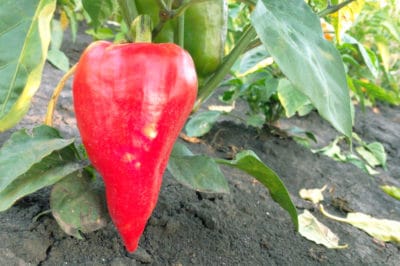Preparing A Site
Improving garden soil is an ongoing process for anyone aspiring to grow food. Each fall layer compost, organic matter, and 12 inches of mulch on top of your planting beds. The winter season will break everything down adding nutrients to the soil. The mulch suppresses any week growth. With luck, you will pull back a much thinner layer of mulch to reveal fluffy weed-free soil in the springtime.
If you did this, there is no need to cultivate the soil. Instead, use a garden spade to dig holes for your pepper plants. If your soil is difficult to work and compacted, it will need to be cultivated and topped with 3 inches of compost.
Seedlings
In USDA hardiness zones 8 and below, start red pepper plants indoors for best results. Sow seeds into seedling trays 8-12 weeks before the last frost date. Here is a checklist for growing the healthiest indoor seedlings:
- Water from the bottom not the top
- Soak seeds 2-8 hours before planting
- Germinate at temperatures of 80°F(26°C)
- Place under fluorescent lights once sprouted
- Transplant to 4 inch pots when 2 true leaf sets appear
Seedlings can be transplanted outside well after the last frost date when soil temperatures have risen to 65°F (18°C). Always harden off plants before moving them outside.
Hardening Off
Plants need time to adjust to outside temperatures and direct sunlight. Bring seedlings outside for gradually increasing amounts of time each day before transplanting. Let the plants get used to direct light, wind, rain, and temperature fluctuations between day and night over the course of 1-3 weeks.
When plants can spend a full 24 hours outside without showing signs of stress, wilt, or sunburn, they can be transplanted.
Watering and Feeding
Feed pepper plants with organic fertilizers or aerobic compost twice in the season. Work a handful or two of compost into the hole when you transplant the seedlings. A tablespoon of Epsom salt in the hole at this time is also useful for alkaline soils.
Then feed the plants again when they begin to flower. Top dress the soil around the plants with 2-3 inches of compost or apply a liquid fertilizer. Avoid nitrogen-heavy fertilizers on peppers.
Water peppers at least 3 times a week. The ideal amount of water is 2 inches per week, adjusted for natural precipitation.
